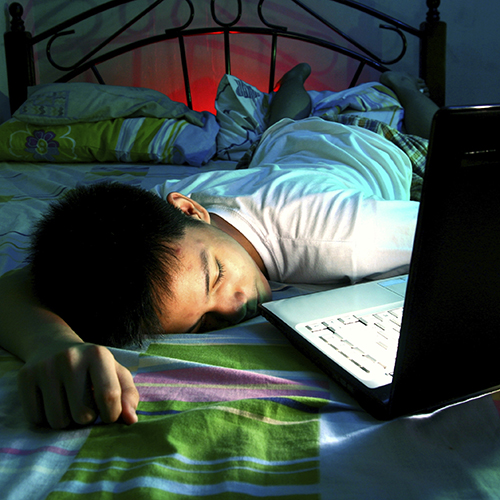01 October 2020

Adults and children who regularly go to bed late are more likely to have an unbalanced diet, watch more screens and exercise less.
Staying up late is often a special treat for the kids but make it a habit and it could be damaging to their health and wellbeing, according to a new research from the University of South Australia.
Objectively measuring multiple sleep characteristics in Australian children and their parents, the world first study identified four primary sleep profiles – Short sleepers (27 per cent), Late to bed (17 per cent), Long sleepers (24 per cent) and Overall good sleepers (31 per cent) – finding that those regularly going to bed late were in the lowest socioeconomic position and had the least favourable diet and activity behaviours.
The study is the first population-derived study to establish correlations between sleep, sociodemographic characteristics and lifestyle.
Lead researcher, UniSA’s Lisa Matricciani, says the study provides important understandings for population health and wellbeing.
“We all appreciate the importance of a good night’s sleep, but too much or too little, going to bed late or having irregular sleep schedules can be a cause for concern,” Matricciani says.
“In this research, we looked at a range of factors that can influence sleep and have identified four sleep clusters that can tell us more about people’s lifestyle and behaviours.
“The key finding is that adults and children who regularly go to bed late are more likely to have an unbalanced diet comprising fewer fruits and vegetables and more junk foods, such as chips and sugary drinks.
“Additionally, this group is also more likely to be less active, with children engaging in higher amounts of screen-time and far less physical exercise.
“Notably, people in the Late to bed cluster also came from the lowest socioeconomic demographic.”
The study used actigraphy-measured sleep data collected over a 12-month period for the Childhealth CheckPoint study, a one-off study nested within the well-known Longitudinal Study of Australian Children (LSAC).
Participants (1043 Australian children aged 11-12 years, and 1337 parents [mean age 43.2 years]) wore wrist-devices for seven days to record multiple sleep characteristics – sleep duration, timing, quality and day-to-day variability – supplemented by self-reported information about socio-economic position, age/puberty, dietary habits (NaSSDA survey), and lifestyle behaviours (MARCA).
Matricciani says associations between lower socioeconomic status and the Late to sleep cluster, provides new directions for Australia’s public health messages.
“Understanding the profiles of at-risk groups provide better insights to guide public health dollars,” Matricciani says.
“It’s critical that we ensure that appropriate supports, funds and interventions are directed to Australians most in need.”
…………………………………………………………………………………………………………………………
Media contact: Annabel Mansfield - T: +61 8 8302 0351 M: +61 417 717 504
E: Annabel.Mansfield@unisa.edu.au
Researcher: Lisa Matricciani - T: Lisa.Matricciani@unisa.edu.au



